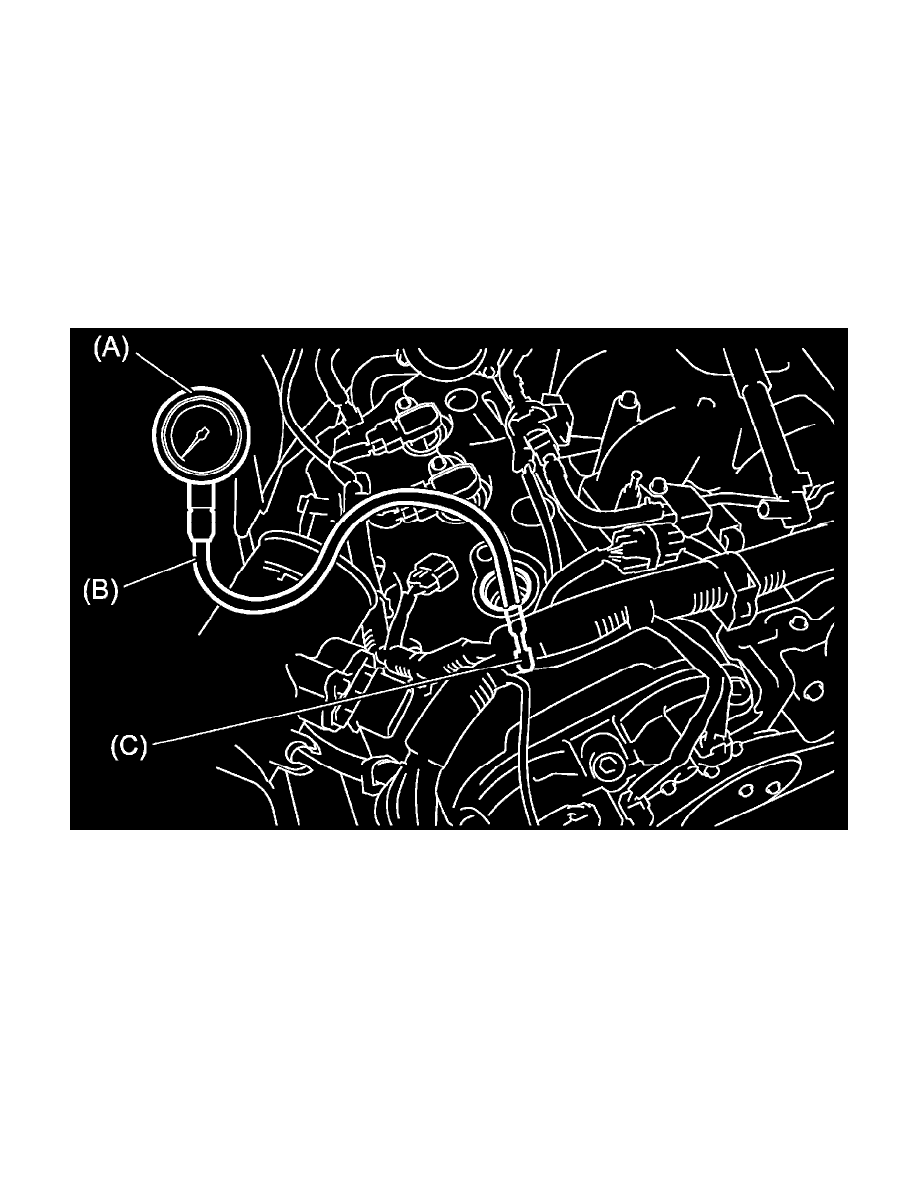Grand Vitara 4WD V6-3.2L (2010)

Compression Check: Testing and Inspection
Compression Check
1) Warm up engine to normal operating temperature.
2) Stop engine after warming up.
3) After warming up, place shift select lever to "P" range, and set parking brake and block drive wheels.
4) Remove engine cover and air cleaner outlet hose.
CAUTION: When removing engine cover, be sure to lift up its front side to prevent breakage of engine cover claws.
5) Remove spark plug.
6) Disconnect fuel injector connectors.
7) Install special tools (Compression gauge) into spark plug hole.
Special Tool
(A): 09915-64512
(B): 09915-64530
(C): 09915-67010
8) Depress accelerator pedal all the way to make throttle fully open.
9) Crank engine with fully charged battery, and read the highest pressure on compression gauge.
NOTE:
^
For measuring compression pressure, crank engine at least 200 rpm using fully charged battery.
^
If measured compression pressure is lower than limit value, check installation condition of special tool. If it is properly installed, it way be
leakage from piston ring and valve seat.
Compression pressure
Standard: 1200 kPa (12.2 kgf/cm2, 174 psi)
Limit: 1000 kPa (10.2 kgf/cm2, 145 psi)
Max. difference between any two cylinders: 150 kPa (1.5 kgf/cm2, 21.8 psi)
10) Carry out Steps 6) through 8) on all cylinders to obtain 6 readings.
11) Install spark plugs and ignition coil assemblies.
12) Connect ignition coil connectors.
13) Connect fuel injector wires to their connectors.
14) Install engine cover and air cleaner outlet hose.
